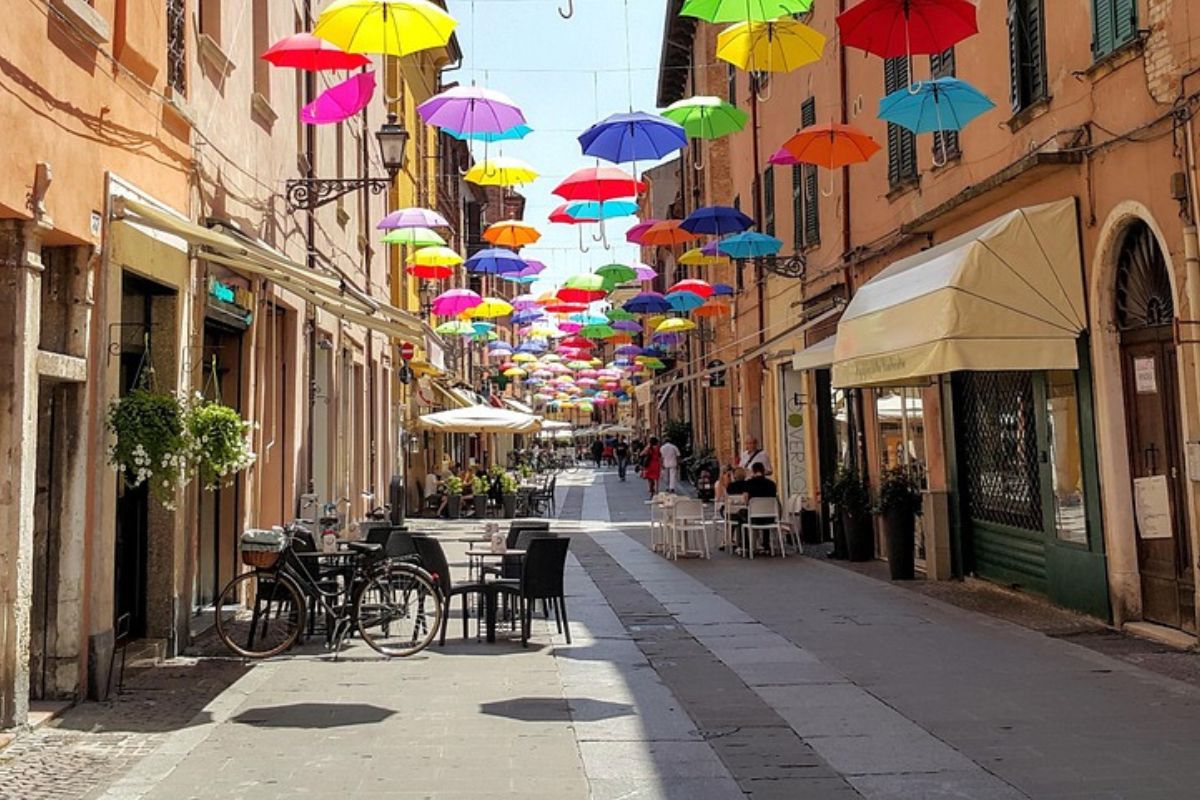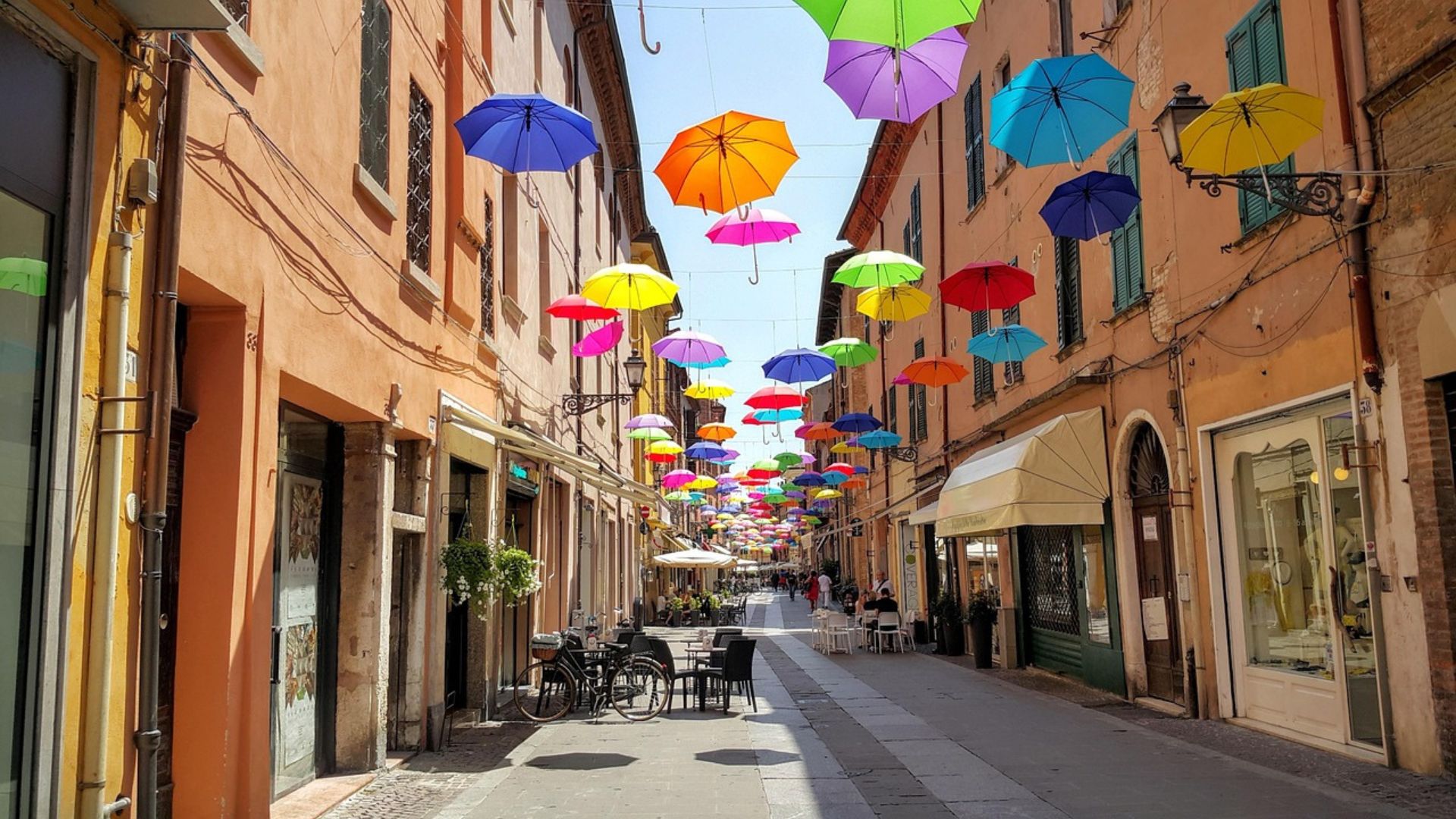Imagine pedaling through ancient cobblestone streets where cars don’t intrude on your journey. That’s exactly what I experienced when visiting Ferrara, often called “The City of Bicycles.” This charming Italian town boasts over 150 kilometers of cycle paths, making it Italy’s most bike-friendly destination.
Since the early 1970s, Ferrara has maintained a car-free policy in its historic center. This creates a peaceful atmosphere that lets you truly appreciate its Renaissance beauty.
During my visit, I rented a bicycle and followed the popular Ferrara Walls route. This is a 9-kilometer path that winds through the Old Town and reveals centuries of history at a perfect pace.
What makes this city special is how bicycles aren’t just for tourists—they’re woven into daily life. As I pedaled alongside students from the local university and residents doing their shopping, I felt less like a visitor and more like part of Ferrara’s living tradition. The absence of traffic noise allowed me to soak in the authentic atmosphere of this Emilian gem.
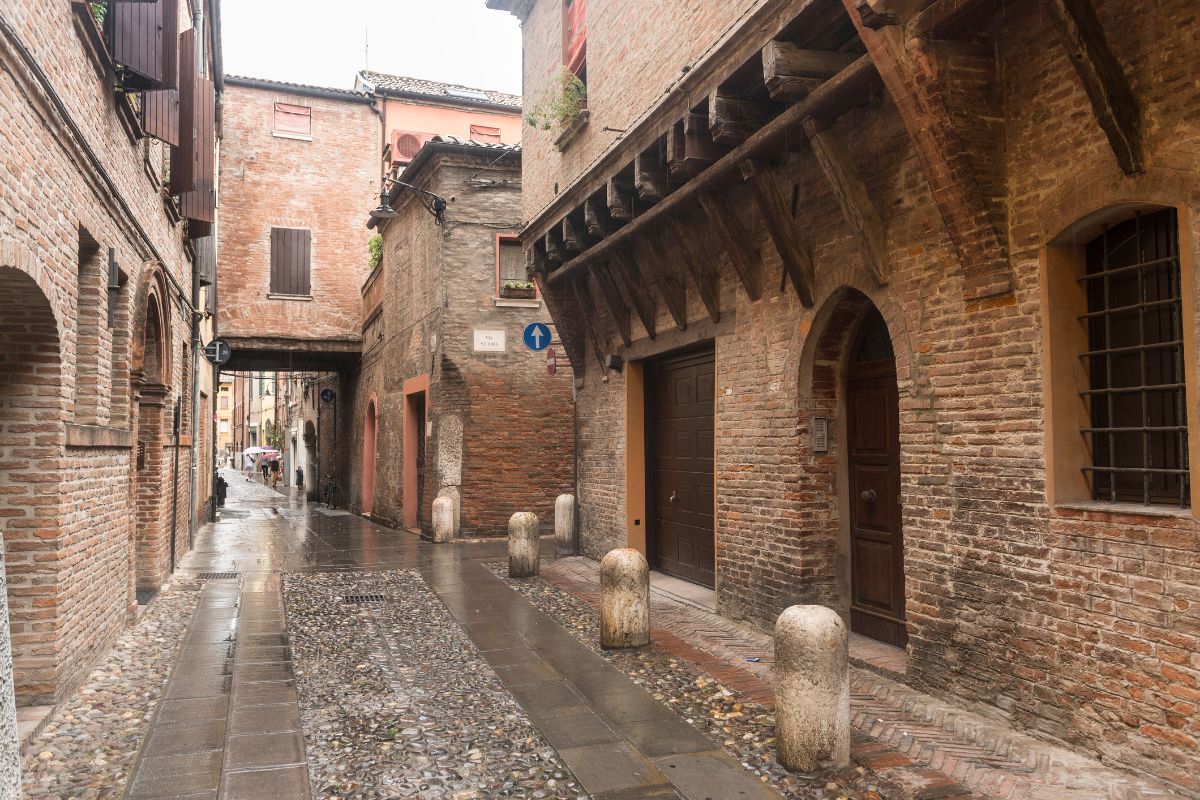
Embracing History on Two Wheels
Ferrara’s ancient streets hold centuries of stories best discovered on two wheels. The gentle pace of cycling allows you to absorb the rich heritage while becoming part of the city’s ongoing love affair with bicycles.
Unveiling Ferrara’s Past
As I pedaled through Ferrara’s Old Town, I felt transported through time. The cobblestone streets beneath my wheels have witnessed the footsteps of Este nobility and Renaissance artists since the 12th century.
The magnificent Este Castle dominates the cityscape, its moat and drawbridges still intact. I found that stopping to admire its four massive towers offered a perfect photo opportunity.
Nearby, the Cathedral’s façade blends Romanesque and Gothic elements. I locked my bike at the convenient racks and spent time exploring its remarkable interior.
The Jewish Ghetto, with its narrow lanes, tells stories of Ferrara’s diverse past. Cycling slowly through this area, I discovered hidden courtyards and architectural details that car travelers simply miss.
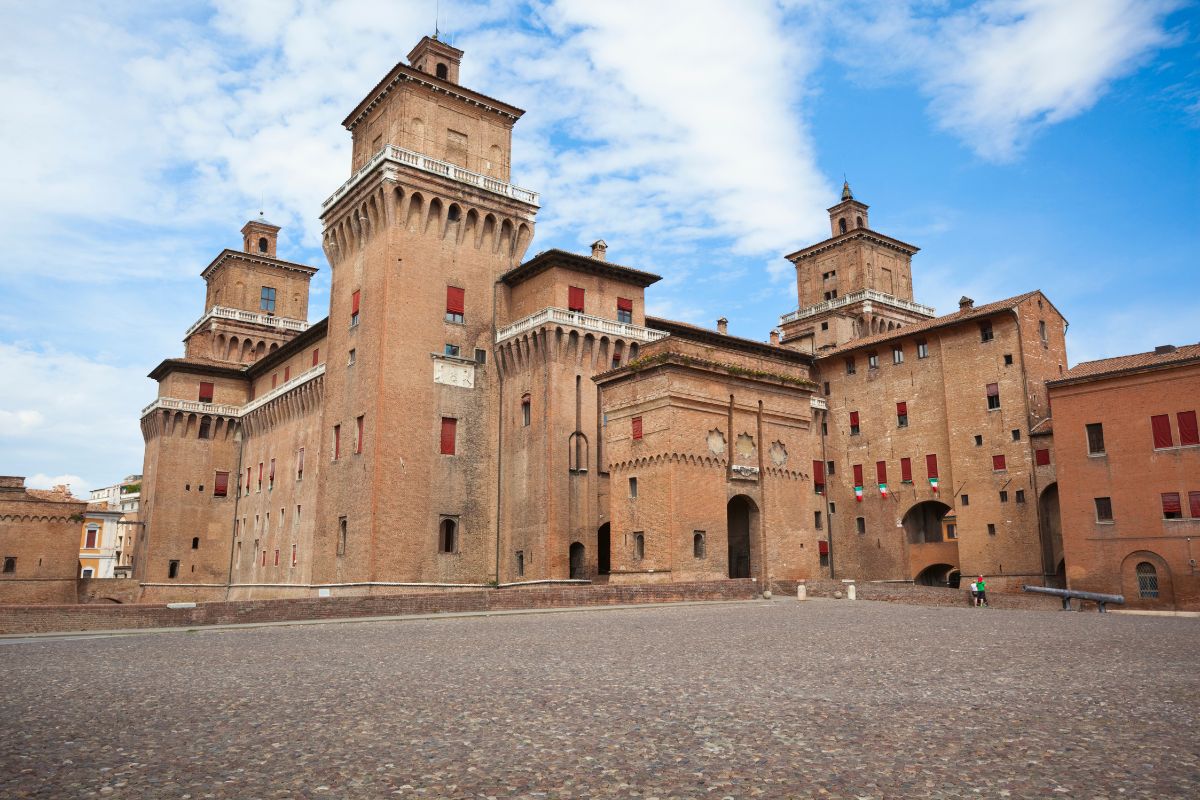
The Renaissance Walls and Gates
Ferrara boasts Italy’s most complete Renaissance walls, stretching nearly 9 kilometers around the Old Town. I cycled the tree-lined path atop these walls, enjoying spectacular views of both the historic center and the surrounding countryside.
The nine original gates still punctuate these walls. My favorite was the imposing Porta degli Angeli, where I paused to imagine medieval travelers entering the city.
Each gate has its character and history. Some feature drawbridges and portcullises, while others display decorative elements celebrating Ferrara’s powerful rulers.
The walls offer welcome shade on hot summer days. I recommend cycling them in late afternoon when the golden light bathes the red brick in a warm glow.
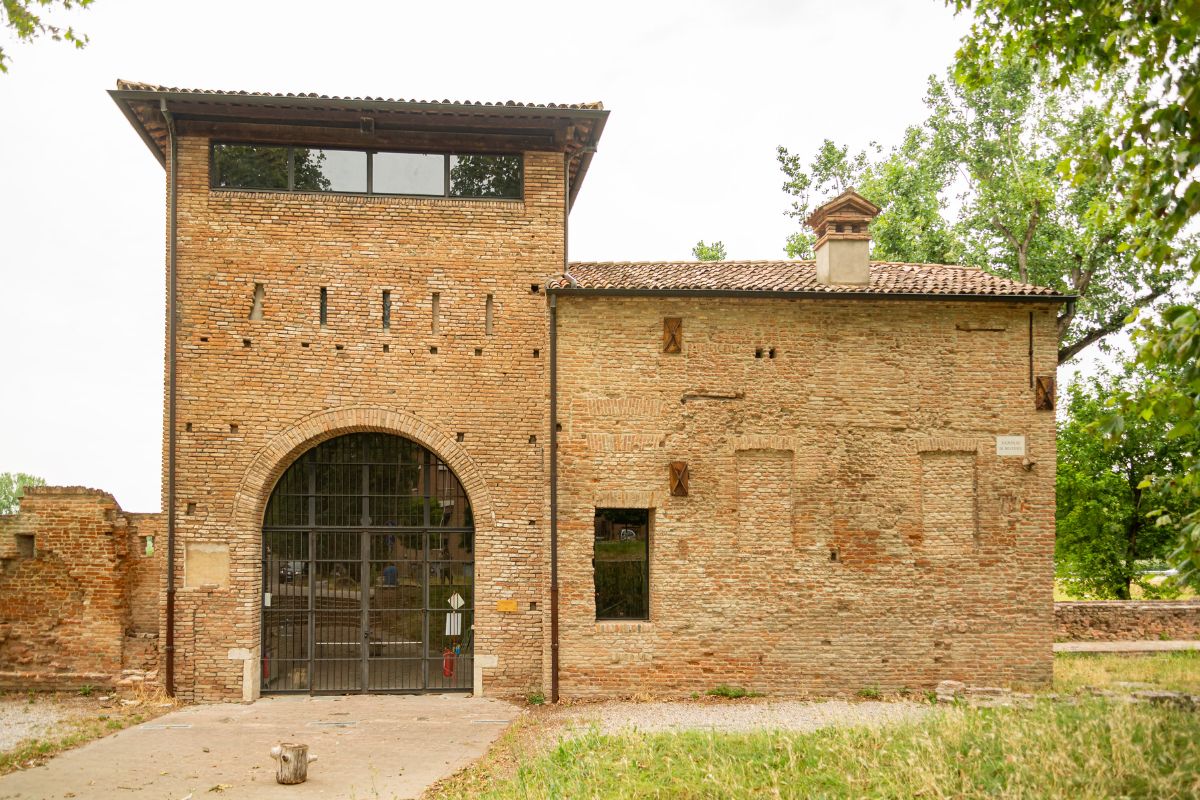
Navigating Ferrara’s Car-Free Lanes
Ferrara’s extensive network of car-free streets makes it a cyclist’s paradise. The city boasts over 150 kilometers of cycling paths that weave through ancient Roman streets and Renaissance architecture.
Rules and Etiquette for Cyclists
When cycling in Ferrara, I’ve noticed locals follow unwritten rules that help everyone move smoothly. Bikes have priority in many areas, but it’s important to yield to pedestrians, especially in crowded spots near the castle or cathedral.
Ring your bell gently as a friendly warning when approaching pedestrians. Most rental shops provide bells with their bikes for this purpose.
Speed limits aren’t officially posted, but keeping a moderate pace is expected in the historic center. Fast riding is frowned upon in crowded areas.
Bike parking is plentiful throughout the city. I found designated racks near most major attractions, but never lock your bike to monuments or buildings – this can result in fines.
During evening rides, lights are essential. Most rentals include them, but double-check before heading out.
Best Routes for Sightseeing
My favorite cycling route begins at the magnificent Estense Castle and follows the ancient city walls. This 9-kilometer path offers stunning views of the city and countryside with minimal elevation changes – perfect for casual riders.
For a cultural experience, I recommend the Renaissance route through the historic center. Start at Via delle Volte with its medieval arched streets, then continue to:
- Palazzo dei Diamanti (famous for its diamond-shaped marble blocks)
- Cathedral of San Giorgio
- Palazzo Schifanoia with its incredible frescoes
The university district offers a lively atmosphere with students zipping around on bikes. The wide avenues here make cycling particularly pleasant and stress-free.
For a nature break, I love riding along the Po River paths just outside the city center. These flat trails provide a peaceful contrast to the bustling historic streets.

Cultural Gems Accessible by Bike
Ferrara’s flat terrain and extensive network of bike paths make it perfect for cycling between cultural attractions. The city boasts over 150 km of cycle routes that connect its most impressive Renaissance treasures and historical sites.
Majestic Castles and Cathedrals
I recommend starting your bike tour at Castello Estense, the iconic moated castle in the heart of Ferrara. With its four imposing towers and drawbridges, this 14th-century fortress tells the story of the powerful Este family who ruled the city for centuries.
Just a short pedal away stands the magnificent Ferrara Cathedral. Its marble façade combines Romanesque and Gothic elements, creating a stunning architectural contrast. The interior houses remarkable frescoes that are worth locking up your bike to explore.
Cycling through the Old Town, I discovered smaller churches with hidden artistic treasures. Many visitors miss the Basilica di San Giorgio, just outside the city walls, but it’s easily accessible by bike and contains beautiful Renaissance artwork.
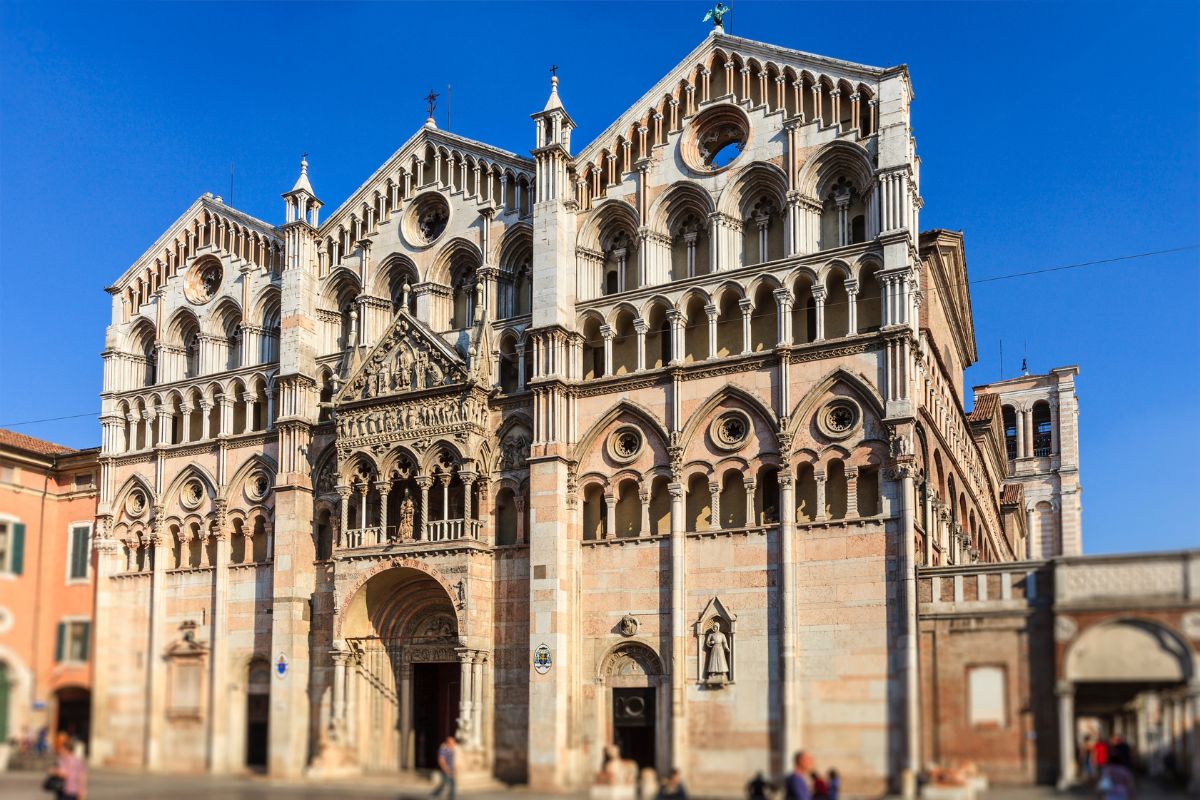
Art and History Museums
The Palazzo dei Diamanti is a must-visit on your cycling itinerary. Named for its 8,500 diamond-shaped marble blocks on the exterior, this palace hosts important art exhibitions throughout the year.
The National Archaeological Museum of Ferrara offers a fascinating glimpse into the region’s ancient past. I found it easy to park my bike outside and spend an hour exploring Etruscan and Roman artifacts.
For Renaissance art lovers, the Palazzo Schifanoia houses the stunning “Hall of the Months” with frescoes depicting medieval life in vivid detail. The bike ride there takes you through charming residential neighborhoods that tourists rarely see.
The Casa Romei museum showcases how wealthy families lived during Ferrara’s golden age. It’s slightly off the main tourist path but perfectly accessible by bicycle.
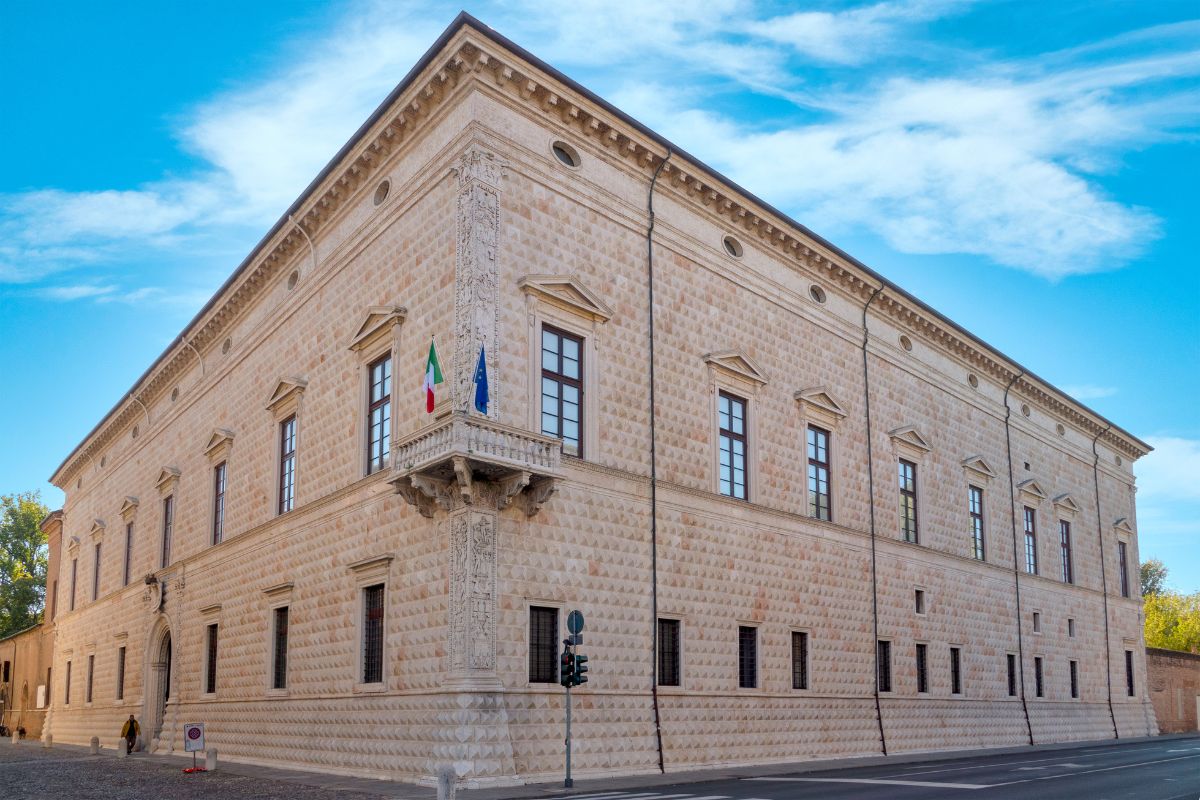
Seasonal Charms and Festivals
Ferrara transforms throughout the year with vibrant celebrations that showcase its rich cultural heritage. The city’s seasonal festivities offer unique opportunities to experience local traditions while exploring its bike-friendly streets.
Summer Events and Activities
Summer in Ferrara brings the historic center to life with outdoor concerts and food festivals. I love cycling through the ancient walls during the Buskers Festival in late August, when street performers from around the world fill the cobblestone streets with music and entertainment.
The warm evenings are perfect for the “Ferrara Sotto le Stelle” (Ferrara Under the Stars) music festival, where I’ve enjoyed performances in the magnificent setting of Piazza Castello.
For a taste of local flavor, don’t miss the Watermelon Festival in July. I recommend renting a bike to reach Palazzo Schifanoia, where its Renaissance frescoes are especially captivating when paired with summer events in its gardens.
Year-Round Festivals and Celebrations
The historic Palio of Ferrara in May is Italy’s oldest palio, predating even Siena’s famous horse race. The medieval procession through town is a spectacular sight, with over 1,000 participants in period costumes.
During autumn, the Ferrara Food Festival celebrates the region’s culinary traditions. I’ve discovered many Emilian specialties while pedaling between food stalls throughout the UNESCO-listed center.
Winter brings magical Christmas markets to Piazza Trento e Trieste. The city’s flat terrain makes cycling comfortable even in colder months, and the festive lights reflected in the moat surrounding Este Castle create unforgettable scenes.
Spring welcomes the International Balloon Festival, when colorful hot air balloons dot the sky above Ferrara’s Renaissance walls—a breathtaking view from your bicycle seat!
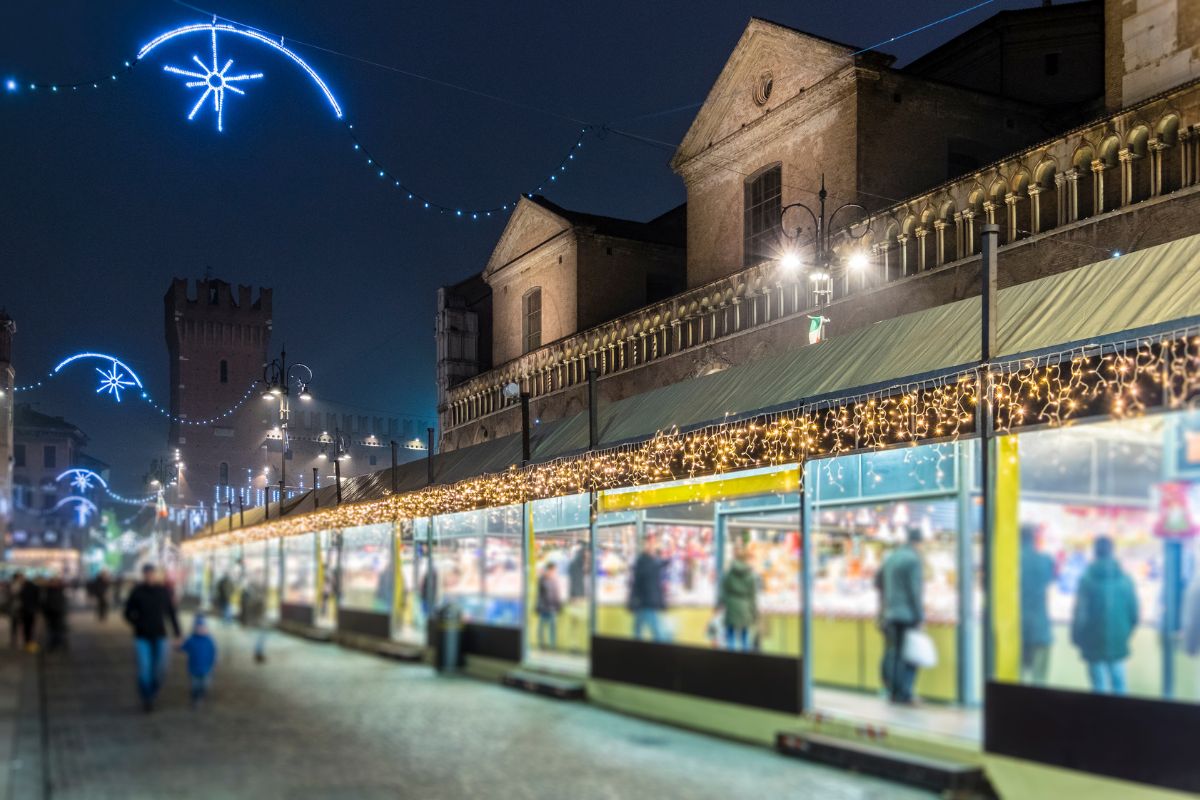
Living Like a Local
To truly experience Ferrara, you need to immerse yourself in the local lifestyle. The city’s relaxed pace and bicycle-friendly streets make it easy to adapt to the unhurried rhythm of daily life here.
Finding the Best Local Eats
I discovered that Ferrara’s cuisine is a hidden treasure of Italian gastronomy. The most authentic places are often tucked away from tourist spots. For a true local breakfast, I start my day at a café near the Old Town, ordering a cappuccino with “pasticcio ferrarese” – the local pastry filled with sweet pumpkin.
Lunch calls for “cappellacci di zucca,” pasta stuffed with pumpkin and Parmigiano cheese. I love visiting the farmers’ market on Via Boccacanale, where locals shop for fresh ingredients every morning.
For dinner, try “salama da sugo,” a rich local sausage served with mashed potatoes. The family-run trattoria Il Sorpasso serves this traditional dish perfectly. Many restaurants have small balcony seating where you can dine outdoors while watching cyclists pass by.
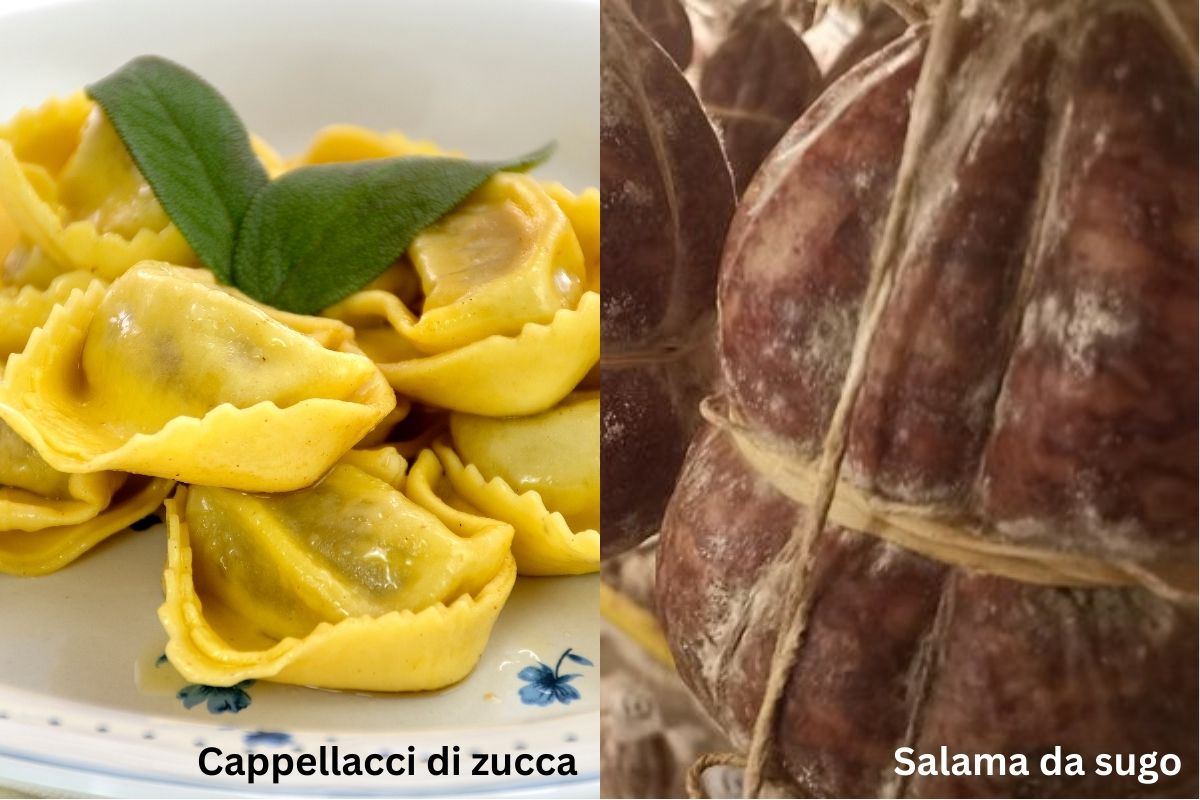
Shopping and Leisure in Ferrara
Locals spend their free time strolling through the medieval streets or cycling along the ancient walls. I often join them for the evening “passeggiata” (walk) along Corso Ercole I d’Este, stopping to chat with shopkeepers.
For unique souvenirs, I browse the artisan workshops in the Jewish Quarter. Here, craftspeople create beautiful ceramics and leather goods using techniques passed down for generations.
On weekends, I’ve noticed many locals take day trips to Bologna, just 30 minutes away by train. Others head to Parco Massari with their dogs, enjoying picnics under the shade of century-old trees.
The best way to experience Ferrara’s rhythm is joining locals at Piazza Trento e Trieste for an evening aperitivo. I order a glass of local Fortana wine and watch as the square fills with families and friends gathering to share stories as the sun sets.
Practical Tips for Ferrara Visitors
Planning your visit to Ferrara requires some insider knowledge to fully enjoy this bicycle paradise. Here’s what you need to know before your trip to make the most of this charming Italian city.
Accommodations and Amenities
I found staying within the historic walls offers the best experience in Ferrara. Small boutique hotels near the castle provide easy access to main attractions, while B&Bs in converted palazzos give you a taste of local life. Prices are generally lower than in Bologna or other major Italian cities, especially if you book in advance.
For meals, the area around Via delle Volte offers excellent trattorias serving local specialties like cappellacci di zucca (pumpkin pasta) and salama da sugo. Most restaurants open for dinner around 7:30 PM, and reservations are recommended on weekends.
Public water fountains are plentiful throughout the city, so bring a refillable bottle. ATMs are easy to find in the center, but smaller shops might prefer cash payments.
Getting Around: Beyond Bicycles
While bicycles reign supreme in Ferrara, I discovered several alternative options. The historic center is compact enough to explore on foot, with most attractions within a 20-minute walk of each other.
For those who prefer not to cycle, a limited bus network connects major points of interest. Purchase tickets at tobacco shops (tabaccherie) or newsstands before boarding.
Taxis are available but rarely needed unless you’re traveling to outlying areas or making a day trip to Bologna (about 45 minutes by regional train).
Train connections worth knowing:
- Ferrara to Bologna: 30-45 minutes
- Ferrara to Venice: 1 hour 15 minutes
If you do rent a bike (€8-15 per day), be aware that certain areas are pedestrian-only. Remember to lock your bicycle securely, even in this safe city!
Frequently Asked Questions
Ferrara’s vibrant bicycle culture offers unique experiences throughout its historic center. Visitors and locals alike navigate ancient streets, discover hidden gems, and contribute to the city’s eco-friendly atmosphere through cycling.
Pedaling through Ferrara’s medieval lanes reveals a treasure trove of unexpected delights. I’ve discovered charming courtyards hidden behind unassuming facades that aren’t mentioned in guidebooks.
The city walls circuit provides a peaceful 9km ride with stunning views of both the historic center and the surrounding countryside. Early mornings here offer magical light for photography and a chance to spot locals beginning their day.
Secret gardens and small neighborhood cafés frequented by residents become accessible when you explore by bicycle. Many of these spots remain undiscovered by tourists arriving on organized tours.
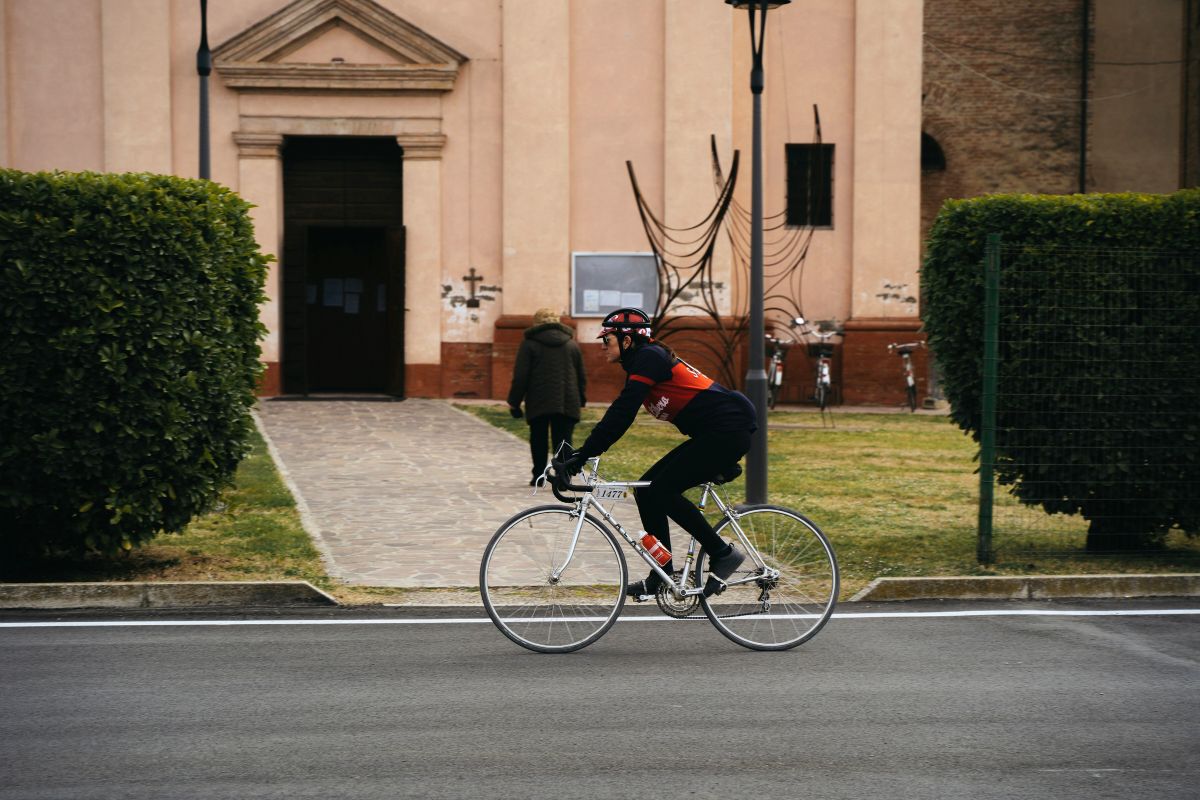
The narrow medieval alleys of the Jewish Ghetto are best explored by bike, revealing authentic workshops and specialty food stores. I recommend parking and walking through the narrowest passages to fully appreciate the atmosphere.
Via delle Volte, with its ancient arched passageways, offers a magical cycling experience that feels like traveling through time. The covered street dates back to medieval merchants and connects directly to the old marketplace.
The banks of the Po River, just a short ride from the center, provide beautiful natural landscapes and picnic spots accessible primarily to cyclists. The riverside paths lead to small fishing villages that maintain traditions centuries old.
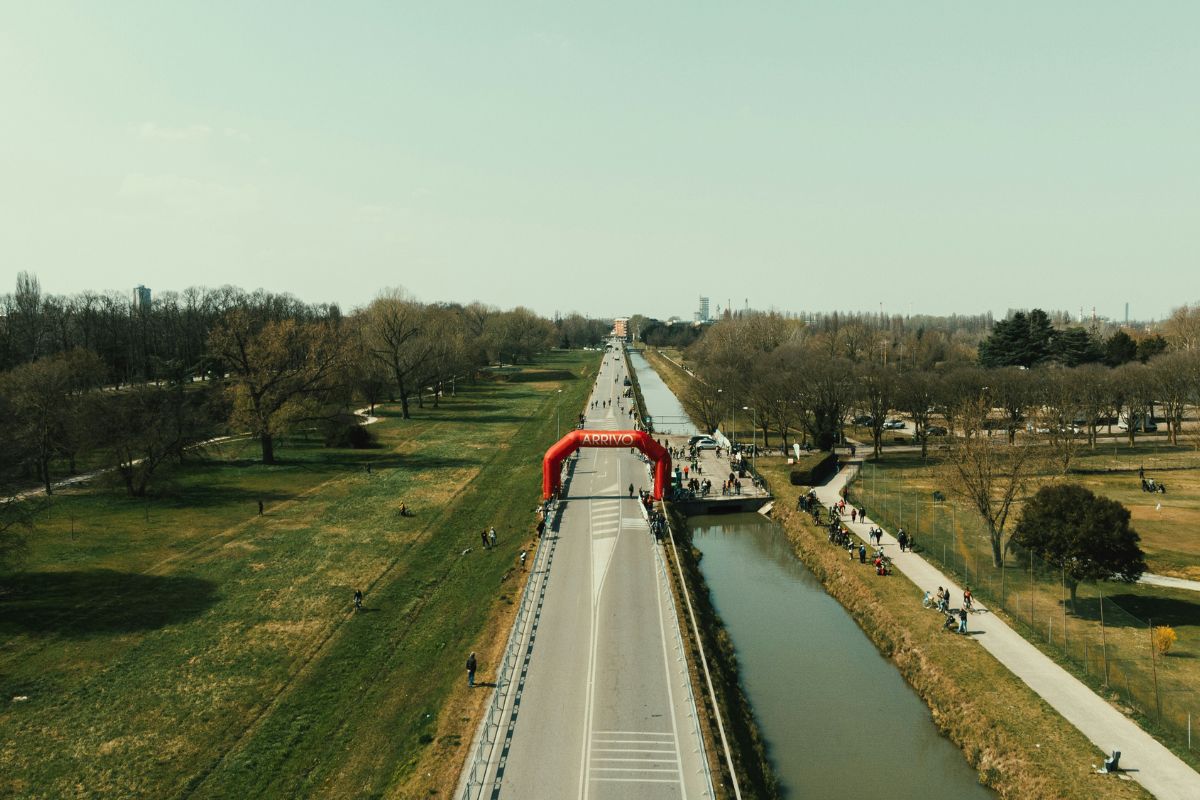
By choosing bicycles over cars, visitors help preserve the city’s ancient cobblestone streets from vehicle damage and pollution. This reduces maintenance costs for historic structures sensitive to vibration and emissions.
Local businesses in Ferrara have embraced the cycling culture, offering discounts to customers arriving by bike. I’ve enjoyed special “cyclist menus” at restaurants that source ingredients from nearby farms accessible by bicycle paths.
Ferrara’s community bike-sharing programs reinvest profits into historic preservation projects. Using these services directly supports the maintenance of monuments and public spaces throughout the car-free zone.

Follow the locals’ lead on timing – midday can be busy with pedestrians, while early morning offers peaceful riding. I’ve found 7-9 am perfect for photography and unobstructed exploration.
Learn basic hand signals used by Ferrara cyclists, particularly at intersections where informal right-of-way customs exist. A slight nod or hand gesture goes a long way in communicating with fellow riders.
Purchase a bicycle bell – they’re not just souvenirs but essential for politely navigating pedestrian areas. The distinct “ring-ring” of approaching cyclists is part of the city’s ambient soundscape.
Join the evening passeggiata (social stroll) on bicycles around the city walls, where residents catch up with neighbors. Dressing nicely for this casual ride reflects local tradition – I noticed many Ferrarese riders in stylish yet practical clothing.
Visit a local bicycle repair shop where craftsmen maintain vintage bicycles with techniques passed down generations. Some shops offer short workshops where you can learn basic maintenance while hearing stories about the city’s cycling history.
Participate in seasonal bicycle festivals where locals decorate their bikes and parade through town. During these celebrations, temporary food stalls serve regional specialties along popular cycling routes.
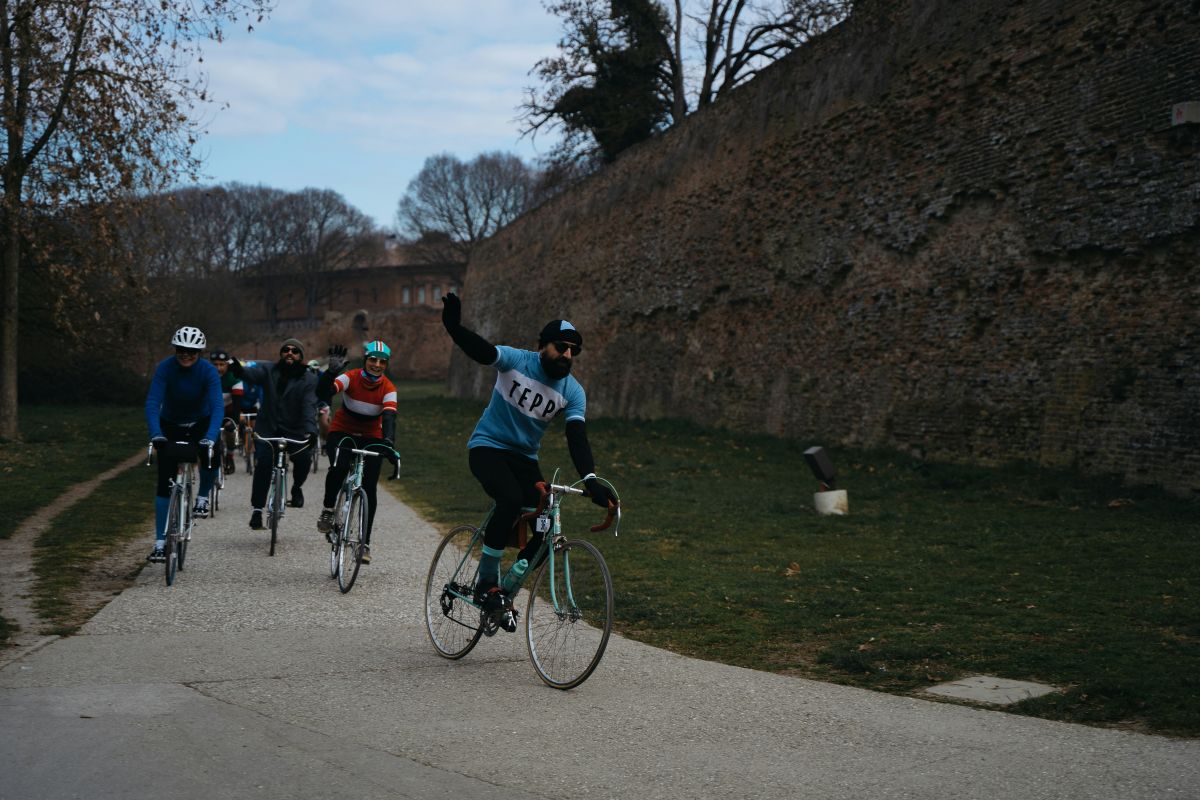
The city’s official bike-sharing program offers convenient pickup points near the train station and major hotels. Their app is easy to use, with options for hourly, daily, or weekly rentals at reasonable rates.
Family-owned bicycle shops near Castello Estense provide quality rentals with personalized route recommendations. Many include baskets, locks, and maps highlighting car-free zones and points of interest.
Several hotels in Ferrara offer complimentary bicycles for guests. You can often find vintage models that complement the historic setting. Ask at reception about availability, as these tend to be popular and may require a reservation.
